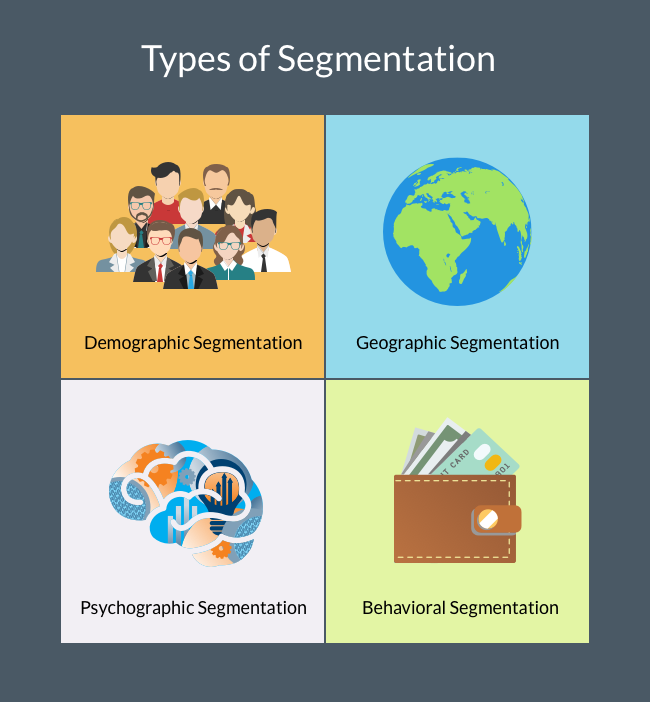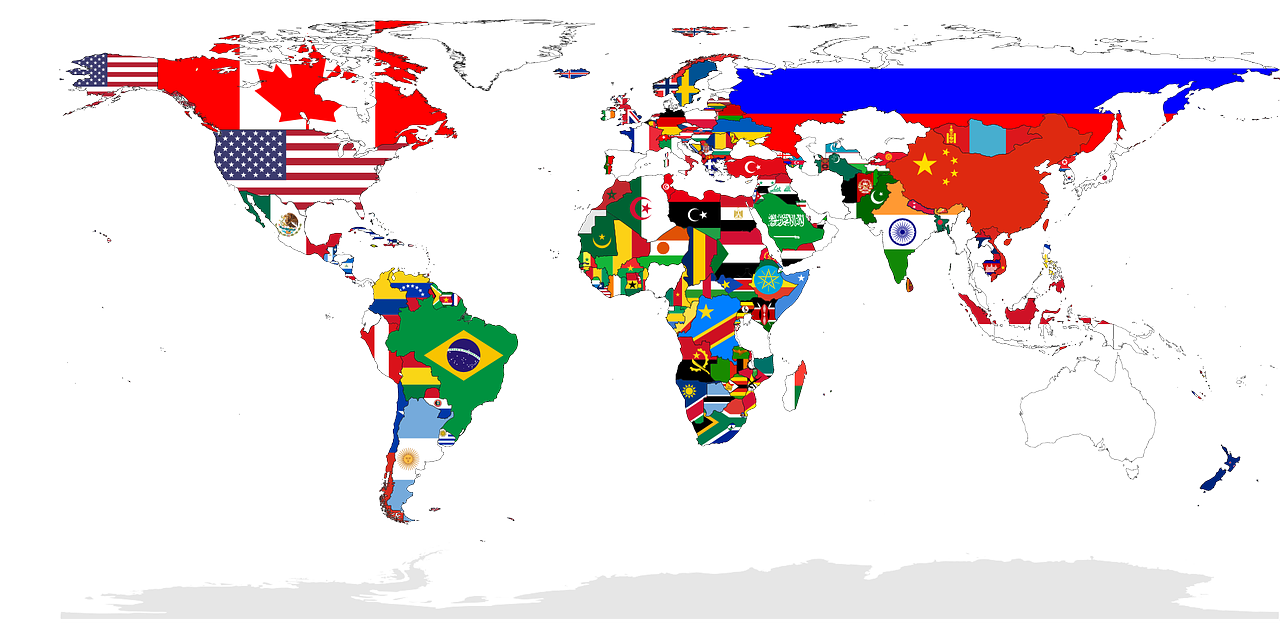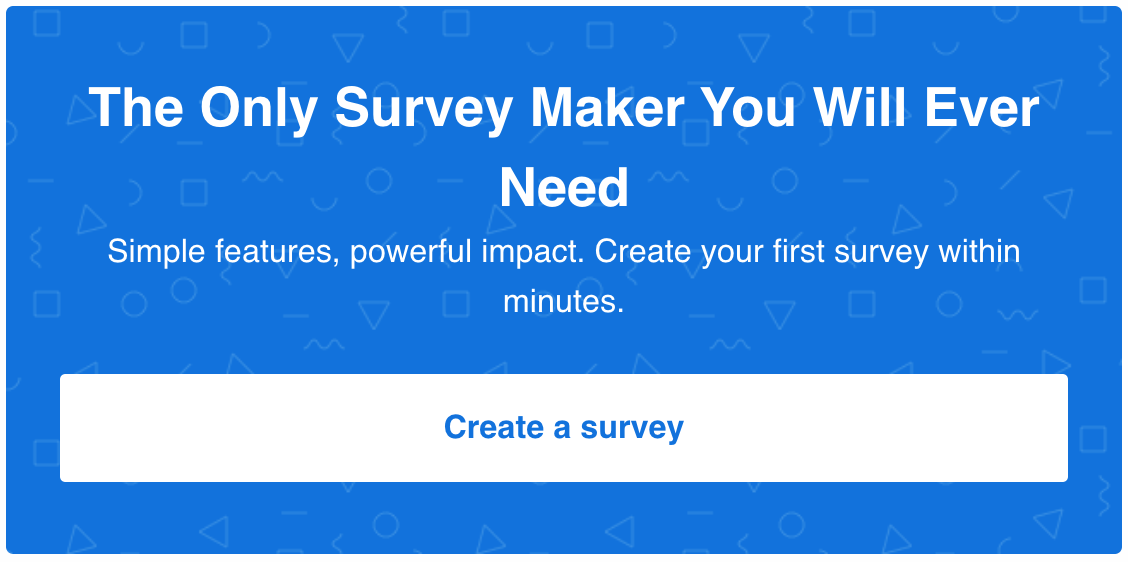Sell more by selling to fewer – it’s every marketer and business owner’s dream. Sure, it sounds great in theory, but is it really achievable in practice?
It can be, but only if you segment your target market the right way, using adequate types of market segmentation.
Market segmentation, essentially, is the process of dividing a large market (consisting of both potential and current customers) into smaller groups of customers (referred to as segments) on the basis of shared characteristics.
Before I tell you a bit more about different types of market segmentation and market segmentation techniques, let’s just briefly examine some of the benefits of segmenting your market.
Why Segment Your Market
Let’s say you’re selling sports shoes. If you’re looking to segment your target audience, one of the ways to do so would be to create different customer groups based on the sport they prefer. That way, you could divide your market into those who are into basketball, football, tennis, gym, running, and so on.
After doing so, it’s quite easy to target different market segments with custom, highly-relevant ad campaigns. That way, you’ll avoid trying to sell tennis shoes to someone who is a basketball player – instead, you’ll be able to target them directly with an ad for the new Air Jordan model, for example.

In addition, people are often buying the same product but for completely different reasons. For example, someone needs a comfortable pair of sports shoes for running a marathon. Another person might need them for a daily workout at the gym. They may end up buying the same pair of shoes but intend to use them differently.
Why does this matter to your marketing efforts? Well, if you approach those two potential customers with personalized messages that address their own needs, they’ll be much more likely to buy.
This approach to marketing and sales will surely take more time and effort at first, but later on, you’ll save a lot of time and money by avoiding mistargeting your products to customers that are unlikely to have interest in those. In addition, your customers will see your mart\keting campaigns as far less intrusive if you’re trying to sell them something they might actually need.
Segmentation has a vital role in email marketing too. In fact, segmenting email lists can increase open rates by 19% and click-through rates by 21%.
There are many different ways to segment your potential customers but here we’ll examine the 4 main types of market segmentation.
4 Main Types of Market Segmentation
The 4 most effective and most commonly used types of market segmentation are presented in the image below. As each of the types has found its application in digital marketing, I’m going to briefly define them using helpful examples and tips.

1. Demographic Segmentation
Demographic segmentation enables you to divide your target market into different customer groups based on demographic data such as age, gender, race (ethnicity), education, occupation, marital status, family size, and so on.
It’s one of the most basic and most commonly used types of market segmentation because multiple aspects of consumer behavior (what products or services we buy, how often we do it, how much we are willing to spend, etc.) often depend on various demographic elements.
Demographic segmentation enables you to segment your audience on the basis of what they do and who they are and can be used to make sure your marketing campaigns are targeting the right people.
Firmographic segmentation
Essentially, firmographic segmentation is demographic segmentation that looks into companies and organizations rather than individuals. It takes into account things like company size, number of employees,
If you need help determining which types of demographic information you need to obtain for your market segmentation efforts, here are the most common types of demographic questions to ask your customers.
2. Behavioral Segmentation
Behavioral segmentation is the type of market segmentation that divides the population according to their behavior and decision-making patterns including purchase, consumption, lifestyle, awareness, occasions and usage patterns.
Segmenting your customers into smaller groups based on their purchase behavior enables you to create a more targeted approach when it comes to your marketing efforts.

Let’s take the smartphone market as an example. Back in its days, Blackberry was launched primarily for business users. Samsung, on the other hand, has a bit wider consumer group of people who like Android and a wide selection of apps and features, while Apple targets premium users who identify as a part of a unique group of smartphone users.
Behavioral segmentation is particularly effective during the season of holidays, festivals, and other special occasions. Certain occasions drive sales only during certain parts of the year and may include holidays (Christmas, Thanksgiving, Halloween Mother’s Day, etc.), seasons (summer, spring, winter, autumn), or personal occasions (start of a new school year, prom, graduation, wedding, new job, and so on).
For example, just before the beginning of a new school year, many online retailers use behavioral segmentation to target parents using special offers and discounts on backpacks, notebooks, children clothes, and other school-related accessories.
To make things easier for you, we’ve prepared this complete guide to behavioral segmentation.
3. Psychographic Segmentation
Another one on our list of types of market segmentation – psychographic segmentation – enables you to divide the existing and potential customers according to psychological characteristics (drawn from an individual’s lifestyle and preferences) that are likely to affect their purchasing habits.
Psychographic segmentation is similar to behavioral segmentation in the fact that both focus on data that is not so easily measurable (unlike the remaining two types of market segmentation, demographic and geographic, which focus on quantifiable data).
Still, the main purpose behind the two is different. While behavioral segmentation helps you understand how to get your audience to buy from you, psychographic segmentation is more aimed at learning how your product or service fits your potential customer’s life so as to improve your marketing efforts.
By doing psychographic segmentation, you should be able to find out what are some of your target audience’s goals, preferences, issues, obstacles, and how you can help them achieve or overcome those.
If you’d like to learn more about how to use psychographic segmentation to better target your customers, check out this guide.
4. Geographic Segmentation
Geographic segmentation (sometimes considered a subset of demographic segmentation) data is the easiest to obtain out of all the types of market segmentation. Basically, it categorizes people on the basis of geographical boundaries.
Understanding the geographic regions and climates of different target customer groups enables you to address different geography-dependant needs, interests, and preferences that can help you decide where to advertise and sell which of your products or services.

For example, you’re not likely to sell many heaters in countries with a warm climate, just as you probably won’t be marketing air conditioners in countries that have cold weather all year round. In addition, people living in municipal areas have completely different interests and needs compared to those living in non-municipal areas.
How to Perform Effective Market Segmentation
What’s the best, most user-friendly, and highly effective way to segment your market?
Surveys and online quizzes.
If you’re looking to obtain quantifiable data to be used in demographic or geographic segmentation, surveys are your thing. Online surveys are easy to distribute, fill out and analyze, and as such represent a perfect tool for market segmentation.
In case you would like to find more about different types of surveys and how to use them to better understand your customers or are interested in making your own survey, we’ve got you covered.
If you need to do psychographic and behavioral segmentation, this is where online quizzes kick in. Quizzes are an extremely effective way to generate and segment leads. In addition to being fun and engaging, quizzes can help you gather all the information you need from and about your customers, without coming off as too intrusive.
Rejuv Medical, a health clinic, used online quizzes to segment their potential patients and offer them exactly the services they need. The result? 15 new patients and $18,000 in revenue with only one quiz.

To achieve similar results, you’ll need to be using a quality lead generation tool. But what kind of lead generator works best?
While most lead generation tools allow you to collect emails and other basic contact information from your audience, the best lead generation tools enable you to find out more about your potential customers and perform different types of market segmentation based on their geographic, demographic, psychographic and behavioral information.
If you would like to create your own quiz right now and use it to gather relevant data about your potential customers, we’ve prepared this detailed quiz maker guide to make the entire process a breeze.
